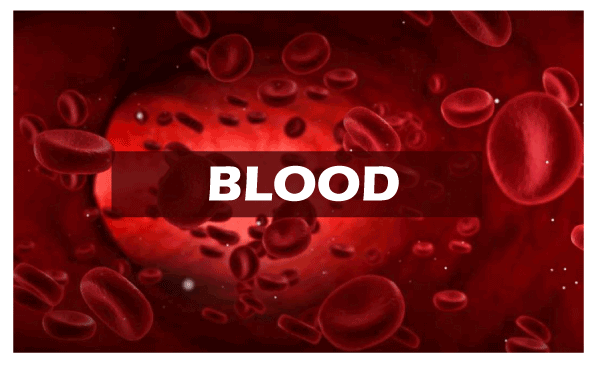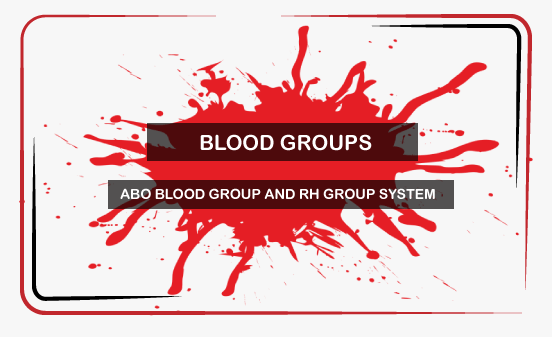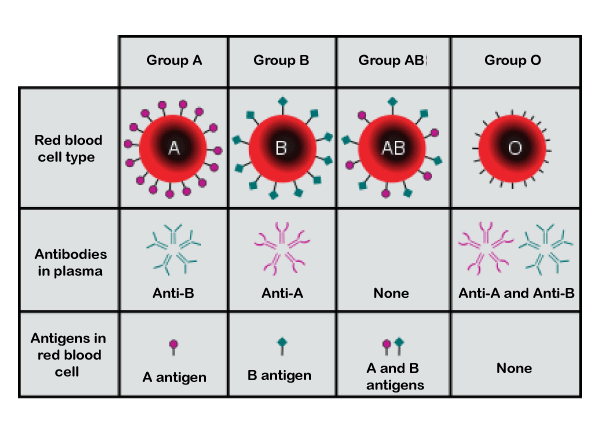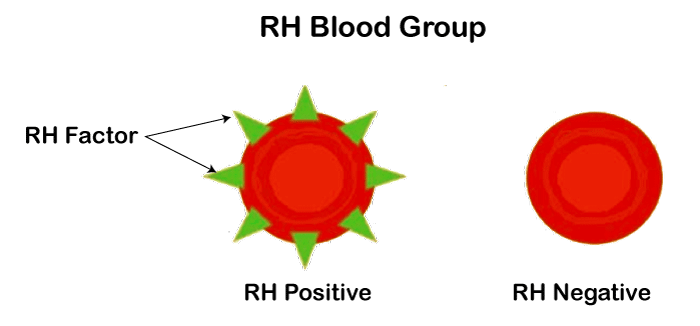Blood Group TypesBlood is one of the most important elements of the human body. It takes part in most of the body's activities. Although it is present in all humans, it has different types. In particular, blood type in humans usually depends on which gene they have inherited from their parents. In this article, we are discussing the major blood group types and their descriptions. Before discussing the different types of blood groups, let us first discuss the definition of blood and how its types are determined. What is blood?Blood is a fluid connective tissue and the essential parts of the circulatory system in the human body. It is usually made up of the combination of the red & white blood cells and platelets, suspended in a fluid known as plasma (the liquid form of blood). Moreover, it also contains erythrocytes and leukocytes and millions of molecules with their specific roles and functionalities. The composition usually varies from one human to another. 
The definite amount of blood in humans usually depends on their size and can vary from one person to another. However, a healthy person typically consists of approximately 5 liters (12 pints) of blood circulating throughout the body. Besides, different people may or may not have the same blood type. Blood cells must be matched while transferring the blood from one human to another. The one who gives blood is called a donor, while receiving the blood is named a recipient. The process of blood transfer from donor to recipient is termed 'blood transfusion'. Importance of Blood Group TypesThe different types of blood groups were introduced in 1901 by an Austrian scientist Karl Landsteiner. Before the introduction of blood groups, the doctors used to think that all people have the same blood groups. Many people died during blood transfusions (transferring blood from one person to another) because of wrong blood mismatch. It is clear that if two different blood groups in a person's body are mixed, the blood can clump. The wrong combination of blood types can trigger adverse reactions or dangerous immune responses, which can also be life-threatening. Therefore, the recipient and the donor need to have the same blood types. For example, people with blood group A can safely receive blood group A from others during a blood transfusion. Although it is best to have an exact match for blood groups during transfusion, it is not always compulsory. It is also possible for the recipient to get other blood groups from the donor; however, blood types must be compatible for the mixing. For example, people with O negative blood groups can donate to anyone in an emergency condition or when there is no supply of the exact blood type. Because it can be a life-threatening condition for the recipient in the case of improper matching of blood groups, it is crucial to have a blood group compatibility check before a blood transfusion to avoid any transfusion reaction. The Different Blood Group TypesTypically, the blood components are the same in all humans. However, there are different types of blood. In particular, there are more than 40 blood groups, but not all of them are clinically significant. The major blood group types are mainly classified based on the following two systems:

Before we discuss these two systems, we must know 'antigens' and 'antibodies'. A human blood group is usually characterized by antigens and antibodies found in the blood. Antigens and antibodies usually take part in the immune system defense mechanism. Antigens: Antigens refer to protein molecules present on the red blood cells' surface. Antibodies: Antibodies refer to the proteins present in plasma. They are elements of a natural defense system in the human body. When there are foreign substances like germs, antibodies typically alert the immune system to destroy them. Let us now discuss both the above systems in detail: ABO Blood Group SystemAmongst various grouping systems, the ABO blood group system is considered the best one for defining blood types. The ABO grouping system mainly classifies the blood groups based on various antigens found in red blood cells and the plasma's antibodies. More specifically, the ABO blood system classifies the blood group types based on the presence or absence of antigens and plasma antibodies. Based on the ABO blood group system, there are four types of blood group: Group APeople with blood group A contain 'A antigens' on the surface of red blood cells and an anti-B antibody in the plasma. Anti-B antibody typically tends to attack blood cells containing B antigen. People with blood group A can safely give blood to others, matching with A blood group and AB blood group. However, they can only take the blood of blood groups A and O. Group BPeople with blood group B contain 'B antigens' on red blood cell surfaces and an anti-A antibody in the plasma. Anti-A antibody typically tends to attack blood cells containing A antigen. People with blood group B can safely give blood to others matching with B and AB blood groups. However, they can only take the blood of groups B and O. Group ABThe blood group AB contains both the antigens, such as antigens A and antigens B, on the surface of red blood cells. However, it does not have anti-A or anti-B antibodies in the plasma. People with blood group AB can safely give blood to those who have the presence of type AB blood group. Besides, they can take the blood of any blood group type. Group OThe blood group O does not contain an A antigen or the B antigen on the surface of red blood cells. However, it includes both the antibodies, such as anti-A and anti-B antibodies, in the plasma. Since antigens are not present in this type of blood, people with this blood group can donate blood to people with any blood group type. Besides, people with blood group O can only receive the blood of the same blood group type, i.e., group O. 
Rh Blood Group SystemRh blood group system or Rhesus system is another most critical system for grouping blood types. Some blood group cells have the presence of Rh factor, commonly called RhD antigen. The D antigen in the Rh system is mainly responsible for making our blood positive or negative. In particular, if we have Rh D antigen in our blood cells, our blood type is called RhD positive. Besides, if we lack the Rh D antigen, our blood type is called RhD negative. Rh-positive (Rh+ve)Those who have Rh-positive blood groups contain Rh antigens on red blood cell surfaces. Furthermore, they can receive blood from people with Rh-positive blood and Rh-negative blood. Rh-negative (Rh-ve)Those who have Rh-negative blood groups do not contain Rh antigens. Moreover, they can only receive blood from people with Rh-negative. 
The Rh blood group system has around 50 defined antigens of blood groups on red cells. Some of the most critical antigens of them include C, c, D, E, e. The most crucial antigen in the Rh blood grouping is the D antigen. This antigen decides the nature of positive or negative blood in the human body. An additional sign (positive or negative) is added after the letter A, B, AB, or O to specify the complete blood group type structure. Combining ABO and Rhesus Blood Group SystemsDoctors are required to take tests of both ABO and Rh when performing blood transfusions. It is because both the blood grouping system together yield the complete blood group type. In particular, eight major blood types are present in the ABO/Rh blood grouping system. Every single person belongs to any of these blood group types. They are tabulated below:
Generally, the blood group type O RhD negative ( O - ) is considered safe for people with all other blood group types. It is deemed safe only because it does not contain antigen A, antigen B, or RhD antigens on blood cells' surface. Furthermore, it is relatively compatible with every other ABO and Rh blood group. However, O RhD negative blood is preferred mainly in emergencies when there is no accurate information regarding the patient's blood group and no time to examine it. Caution: Although the blood group type O RhD negative ( O - ) has long been known as a universal donor, many types of research in recent have suggested that there may be additional antibodies present sometimes. This may sometimes lead to severe reactions when performing blood transfusion with other blood group types.How is a blood type determined?The immune system in the human body recognizes blood as foreign when it is coming from the donor. If the blood cells do not match, the body will initiate an immune response and reject the transfusion. However, this can be toxic and cause severe reactions. Therefore, doctors always determine whether the blood is compatible. Blood type is mainly characterized by the presence/ absence of specific antigens (such as antigens A, B, or Rh antigens) on the red blood cells' surfaces. Antigens are the type of substances in the human body that help the body differentiate between its original blood cells and foreign blood cells. These substances typically trigger immune responses when the body thinks that the cells are foreign, potentially dangerous ones. Since some antigens in the human body can trigger a human's immune system to attack transfused blood, safe blood transfusion depends on proper blood typing and cross-matching.
Next TopicTypes of Biodiversity
|
 For Videos Join Our Youtube Channel: Join Now
For Videos Join Our Youtube Channel: Join Now
Feedback
- Send your Feedback to [email protected]
Help Others, Please Share










